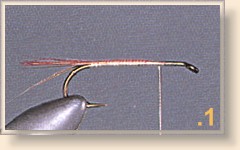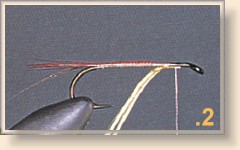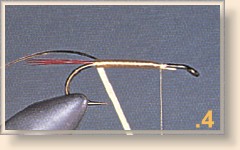
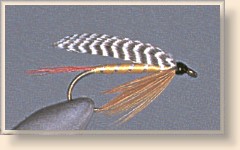 |
|
The Professor
|
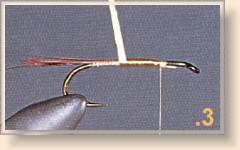
|
|
8. When you reach the bend, pass the floss once behind the tinsel; this sets it
into position to start the ribbing. Then wrap forward, covering the first layer.
You'll notice that the second layer goes on smoother than the first, which is why
you use two layers.
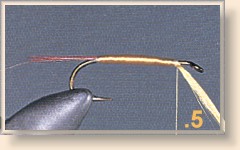
9. As promised, you'll compensate for any bulk caused by the thread wraps used to
tie in the floss. When you reach the tie-in point, simply back off all but one of those
wraps. Complete the body with a couple more turns of floss, allowing it to
push the thread along in front of it. Tie it off beneath the shank and trim the tag
end. This should leave about 1/5 of the hook shank ahead for hackle and wings.
This technique for reducing bulk can be used any time a material is double-wrapped.
It's of particular value with flat tinsel bodies.
|
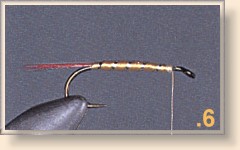
10. Now wrap the tinsel ribbing. Given the size of hook and width of tinsel
involved here, you'll get five turns. Keep them evenly space, and try to come out
in such a position that you can tie off the tinsel either on the bottom or against a
side of the hook. Take a couple of housekeeping wraps.
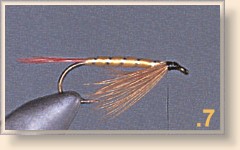 11. Now for the beard-style hackle, which consists of a bunch of barbs similar to those used for the tail, but softer. You may be able to find these in the lower portion of a rooster hackle, or you may need hen hackle, which is invariably soft and webby. Gather the barbs . . .procuring a fairly generous bunch. Cut or strip them from the quill, then pass them to you right hand, holding them by the butt ends with you thumb and forefinger. 12. Position the barbs beneath the throat of the fly. Gauge the length: In this instance, the tips should extend to about the point of the hook. Tie the bunch in place with several upside-down pinch-wraps and secure it with several more firm wraps. Trim off the excess butt material and take a few housekeeping wraps to establish a base for the wing. Note the thread position, which is just a turn or two from the rear of the thread base. 13. Switch to black thread and add a wing . . .[The wing should extend a little beyond the rear of the hook as shown.] Tie off, lacquer, and admire.

More:
|
|
|
|
For more great flies, check out:
Beginning Fly Tying,
Intermediate Fly Tying and Advanced
Fly Tying.
|
[ HOME ]
[ Search ] [ Contact FAOL ] [ Media Kit ]
